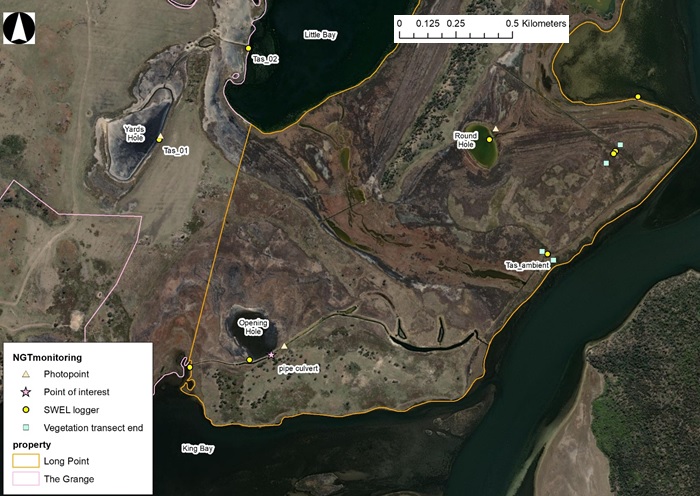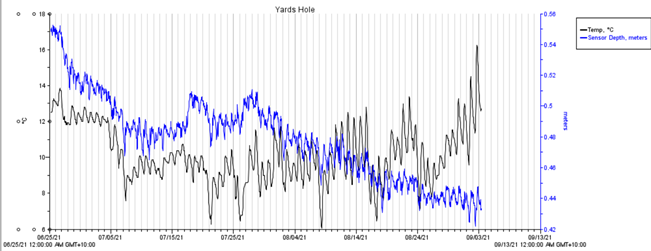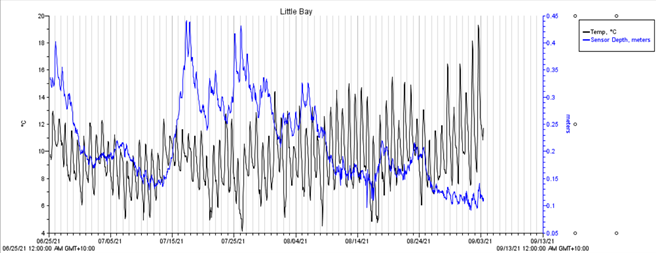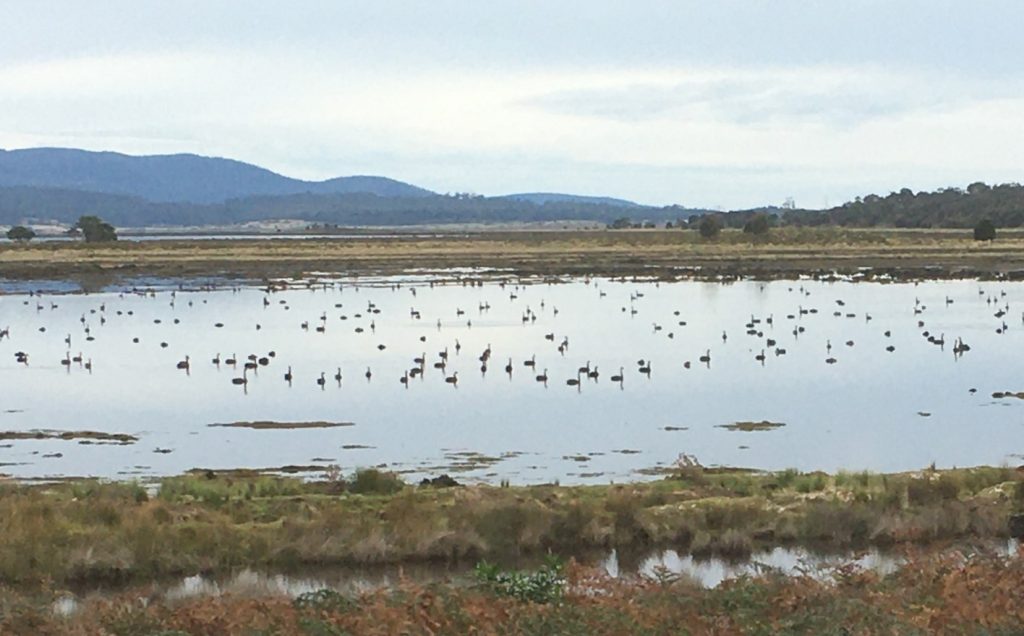Swans, egrets, and early monitoring results at Moulting Lagoon, Tasmania
All monitoring sites have now been established on our initial priority properties, Long Point and The Grange, as part of the broader “Improving the ecological character of Moulting Lagoon and Apsley Marshes Ramsar Sites” project (see previous post here). Water level loggers were deployed in Yards Hole and Little Bay on The Grange back in June, whilst other sites had loggers installed in September, due to COVID-related equipment manufacturing delays.

During the September trip, preliminary data was downloaded from the loggers installed in June. Early data suggests that Yards Hole and Little Bay are connected, as Yards Hole’s water levels fluctuate in sync with Little Bay daily tidal variations and respond to spring tides (as seen in July). Water seems to attenuate in Yards Hole and the level decreased by 0.12 m since the loggers were deployed in late June. Water temperature is also similar between the two sites, although daily temperature variation is greater in Little Bay than Yards Hole.


Moulting Lagoon is well-known for the birdlife it supports. During our June trip, hundreds of swans, including a pair of nesting swans in Round Hole, were observed across Long Point wetlands and the surrounding lagoon. Moulting Lagoon is an important location for Black Swans and has been known to support up to 80% of Tasmania’s breeding population and between 10,000 and 15,000 individuals in non-breeding times.
During our September trip, we observed 26 egrets in a group on the shore of the bay northwest of Round Hole. The group most likely consisted of Eastern Great Egrets, potentially with Little Egrets intermixed. Although not unusual behaviour, in all my years of wading in wetlands it was regarded as a rare sight and one worth sharing.



Now that all the monitoring is underway at Long Point and The Grange, we are turning our focus to the Apsley Marshes. We’re hoping for a site visit in mid-October and look forward to sharing what we learn about this site with you in the near future.
This important work is supported by NRM South, with funding provided via the Australian Government’s National Landcare Program.

